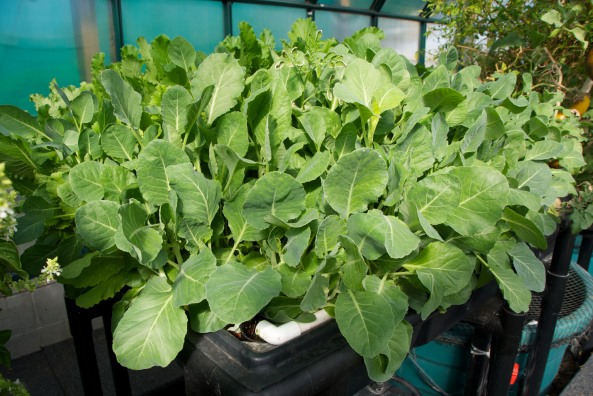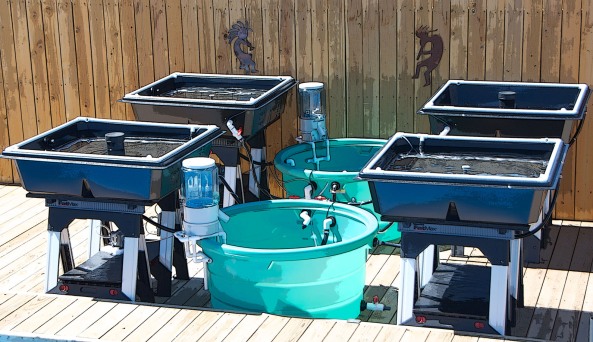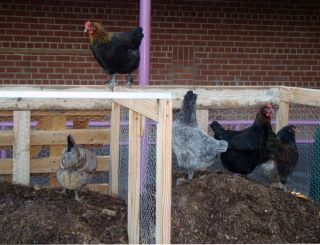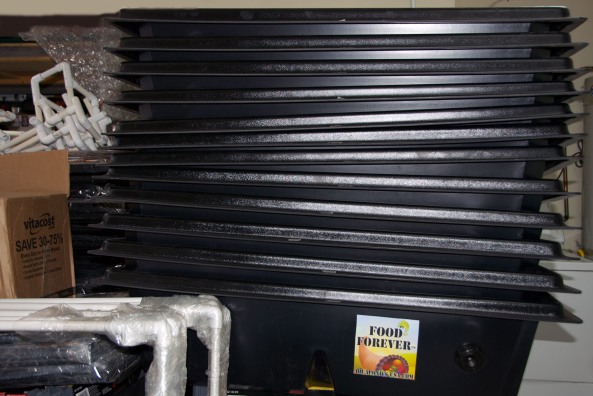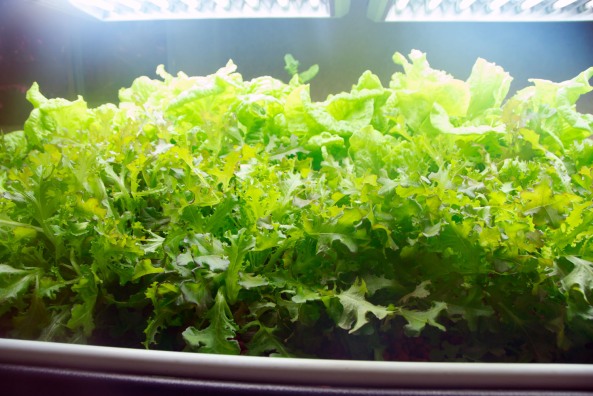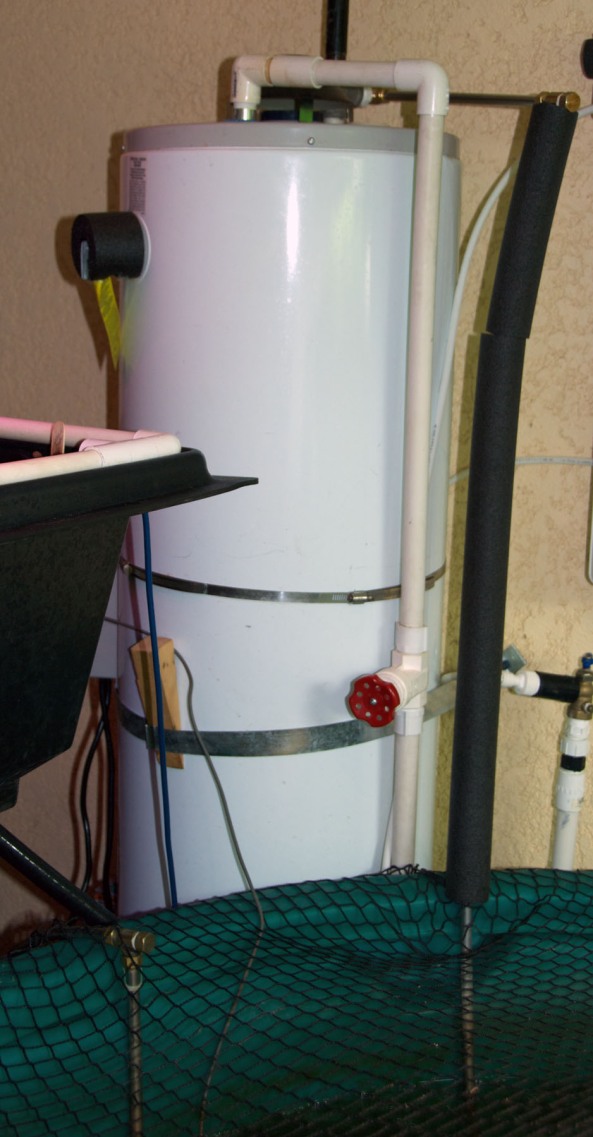A few days ago, I wrote a post asking for help identifying a mystery vegetable that grew like a weed in one of our Greenhouse Grow Beds, tasted delicious in salads, worked great steamed and in stir fries. One thoughtful person answered our call for help; and just like I had already done, she identified this vegetable to be Turnip Greens. With that one piece of back up evidence, I felt pretty confident we had Turnip Greens in our Grow Bed; but now I’m thinking we were wrong.
Today, I went over to my local Home Depot to do a search in the seed section of their Garden Dept; and I was successful as a seed package came up with a picture on it that looks exactly like the vegetable in our Grow Bed. Now, even though Turnip Greens were quite foreign to me, I had at least heard of them before. This vegetable is a complete unknown to me; and I have never even heard its name. Our helper, Fred, said he’d planted cabbage; and it turns out he’s still right. It’s Chinese Cabbage; and it’s called Michihli. Here’s that seed package.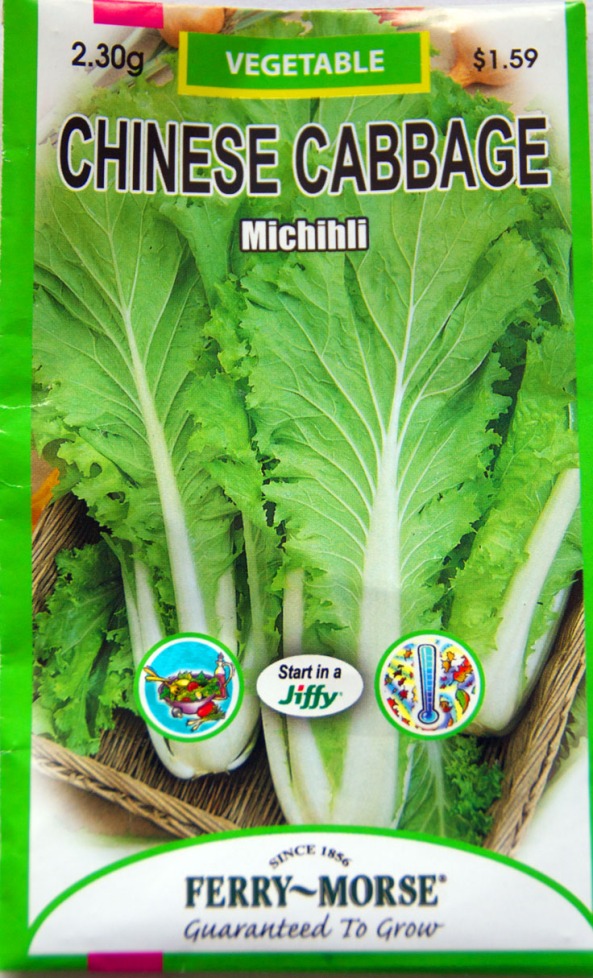
You can go back two posts to see Michihli growing in one of our Grow Beds. According to the package, it grows easily and loves cool weather, which explains why it grew so well in our Greenhouse when it was in winter mode and night temperatures were in the 30’s F outside sometimes while the Greenhouse stayed around 60 degrees F. As of today, I’m feeling like Michihli is the mystery vegetable.
Now, I have to share another confession, the same thoughtful person who identified the mystery plant as Turnip Greens also told us in a comment that she didn’t think the Spinach on the other side of the same Grow Bed was actually Spinach. This vegetable was also planted by our helper, Fred, and he couldn’t remember the name of that plant either. I cooked some of that Spinach-like plant up; and I have to admit it doesn’t taste like Spinach because it’s much milder. So, now, we have another mystery plant on our hands; and the package that describes that plant didn’t come up today. Our helpful reader thought the un-Spinish side of the Grow Bed might be Broccoli before it actually grows the Broccoli stocks. But there is no sign of Broccoli stocks on this new mystery plant.
So once again we’re asking for help in identifying a plant that grew like crazy in cool temperatures and looks a lot like Spinach. The picture of that plant is one post back. I was feeling like a real dufus in regard to this Grow Bed that got away from us until I found this interesting Image.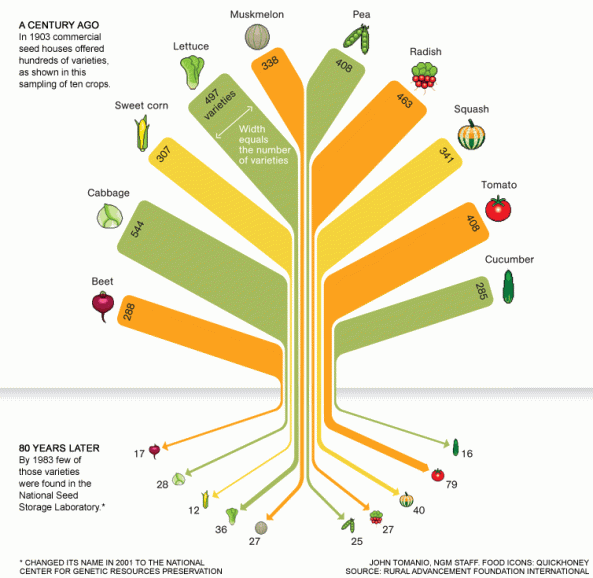
The numbers on this Giff Image are telling you how many different species of vegetables existed in each vegetable category in 1903 (the top thicker bars) and then in 1983 (the bottom skinny bars). When you look at the green colored Cabbage Family bar in 1903, you see it was the largest vegetable family in the sample list of ten crops with 544 different species of Cabbage in it. So when I first looked at this Image, I thought no wonder I don’t know all the species of Cabbage because there are so many.
But that’s actually not the case; and I’m back to being a dufus. Because this Image shockingly shows that by 1983, those 544 species of Cabbage became a mere 28 species. What’s happening to the diversity of our vegetables? One of the things that is happening (and it’s been happening at greater and greater speeds since the mid nineties) is there has been a consolidation of seed companies leading to a corporate domination of our food supply. And the one corporation that has been buying up more seed companies than all the others put together is non other than Monsanto. This pdf, “Seed Industry Structure 1996-2008” shows eye-opening proof of that statement.
As you most likely already know, Monsanto is one of the main corporations behind the proliferation of GMO’s, which is about genetically modifying seeds and then placing a patent on those seeds followed by a pay-to-play business model. Farmers who use Monsanto’s seeds are forbidden to harvest the seeds they already purchased from Monsanto and must re-purchase new seeds every season.
It appears that in buying up as many seed companies as they can, Monsanto is trying to create a monopoly in which eventually only their patented GMO seeds are available on the seed market. Before they pull the plug on all the natural seeds they now control, Monsanto can pretend to be the good guys who are also interested in marketing natural non-GMO seeds. I’m not buying it; and I’m not buying any seeds from a Monsanto controlled company either.
The seed packet above of the Chinese Cabbage, Michihli, is by a company called FERRY-MORSE; and as I trace the ownership, I find FERRY-MORSE is owned by a French company called Limagrain. FERRY-MORSE does not appear in the already mentioned “Seed Industry Structure Map”; but there is a place where there is a crossover between Limagrain and Monsanto. That’s enough to stop me from buying another package of FERRY-MORSE seeds. I guess you could say I’m personally boycotting any seed company connected to Monsanto.
We are presently buying our seeds from Baker Creek Heirloom Seeds, Paramount Seeds and Humble Seed. All three of these companies are, or originated from, family owned US based businesses that emphasize quality, nutrition, health and above all, non-GMO natural seeds. We are actually featuring and selling Humble Seed right on our Aquaponics USA website. Just go to our “Aquaponics and Gardening SEEDS” page to check out these great seeds packaged in long-term unique packaging that maintains the seeds life force.
Hopefully, someone will come forward and help us identify the mystery Grow Bed as both veggies in that bed are still in question. We’ve definitely learned our lesson about the importance of identifying our vegetables. It’s always good to know what you’re eating and from where it’s originating.
Hope this post has been helpful and informative. Until next time, GET GROWING!
